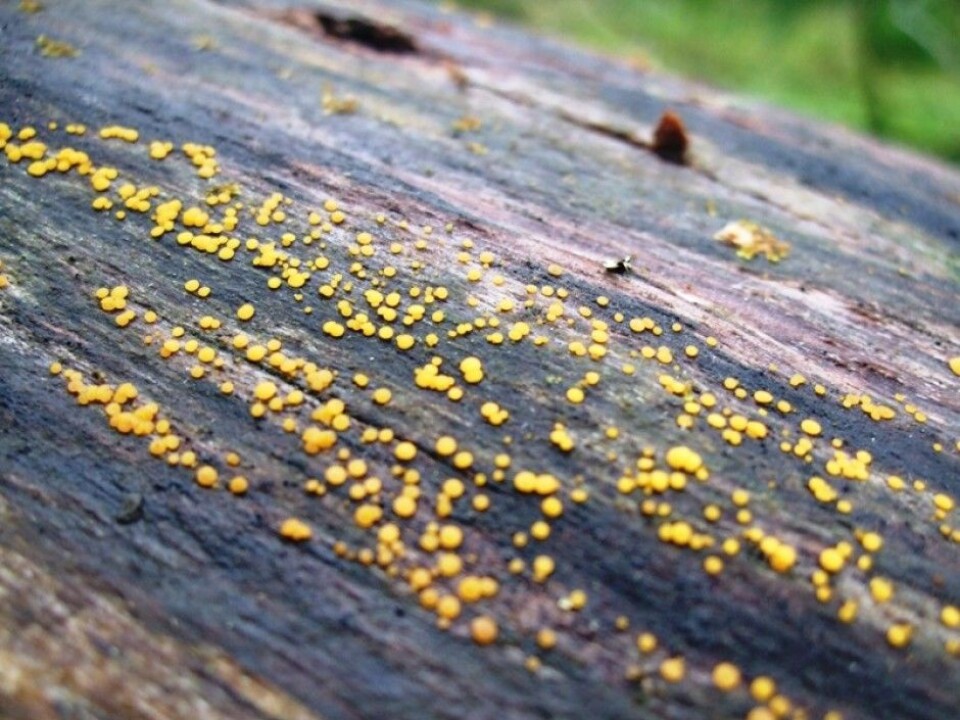
Nature’s engineers keep forests tidy
Trees are tough, even when dead. But a carefully choreographed relationship between specific beetles and fungi is what helps reduce them to sawdust over decades.
Denne artikkelen er over ti år gammel og kan inneholde utdatert informasjon.
A peek inside a forest ecosystem is a little bit like opening a Russian nesting doll and finding the astonishing detail there, even at the smallest levels.
A 12-year-long study of beetles, fungi and rotting trees has given scientists exactly that kind of view over space and time, by showing how visits by a specific beetle species years before can help decide which fungus will ultimately colonize a dead tree.
“I hope that this will help us understand how these species communities are interrelated, so we better understand how much the different species depend on each other,” said the first author of the study, Rannveig M. Jacobsen. Jacobsen is an entomologist and a PhD candidate in the Department of Ecology and Natural Resource Management, at the Norwegian University of Life Sciences in Ås.
Beetles first, then fungus
In the late fall of 2001, researchers from the university in Ås established study sites in two areas in southern Norway. They cut an aspen tree about 4 metres above the ground in each site, so that each contained a downed aspen log and its high stump.

The following spring, they started collecting insects, and kept doing so every summer for four years. Then, in 2013, they went back to see what species of fungi had colonized the dead logs and stumps.
Jacobsen chose to look at three species of fungi: the Artist's bracket (Ganoderma applanatum), the Yellow fairy cup (Bisporella citrina) and the Aspen bracket (Phellinus tremulae), because they have different life histories. The Aspen bracket is a parasite that often infects living aspen trees, while the yellow fairy cup is an annual, and the Artist’s bracket is a perennial.
While Jacobsen was specifically interested in these three species, she and her colleagues tallied 62 species of fungi in all. The most common species was found at 44 of the 55 sites she studied.
Environmental engineers
As she expected, Jacobsen found that the parasitic Aspen bracket did not seem to be affected by the kinds of beetles that had visited the stumps and logs years before. She believes that is because this fungus can attack live trees, gaining entrance to the tree through breaks in the bark.

But she found that the Yellow fairy cup was much more likely to colonize a tree where wood-boring beetles had been years before. Wood-boring beetles, as their name suggests, bore deep into the wood of dead trees in search of sap, and lay eggs there.
The beetles’ larvae then eat the layer of wood just under the bark, thus making it much more likely for the bark to fall off the dead trees, leaving a perfect surface for the Yellow fairy cup to grow.
Jacobsen says this is an example of how beetles can act like ecological engineers, by actively changing their environment, affecting both them and species far into the future.
Spore carriers
In contrast, the Artist’s bracket was most likely to be found where there had been an abundance of fungivorous sap beetles (Glischrochilus quadripunctatus) and round fungus beetles (Agathidium nigripenne) during the first four years after the trees had been cut. As their name suggests, these species are fungus eaters.

While Jacobsen doesn’t know why she found this relationship, she thinks the beetles might actually get spores of Artist’s bracket stuck to them as they graze, and thus help spread the spores as they move from dead tree to dead tree.
Specific relationships
“Our results suggest that early successional insects can have significant, long-lasting effects on the late successional fungal community in dead wood,” Jacobsen and her colleagues wrote in the article on their research, published in Ecology and Evolution.
The researchers noted that the effects can be very specific, with one fungus species depending on one or a few fungus-eating beetle species, for example.
“This will make it easier to give good advice on how we can best protect these species, and also explain why some species have disappeared,” Jacobsen said.

-------------------------------------
Read the Norwegian version of this article at forskning.no






























